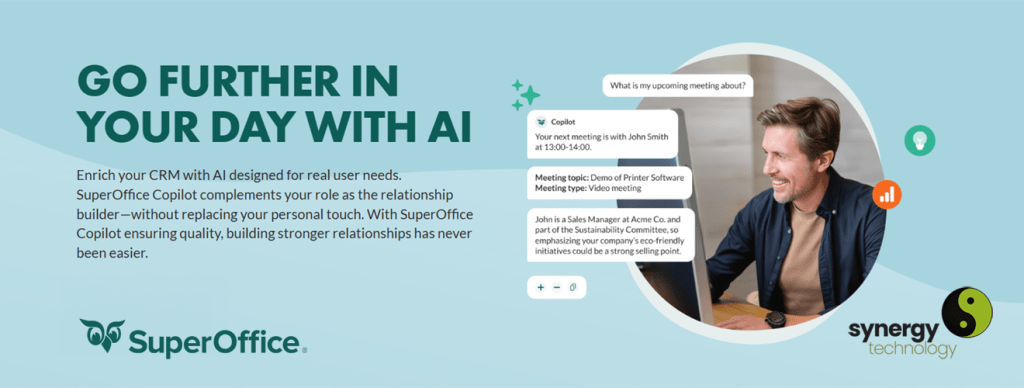Upgrading to Microsoft Dynamics 365 Business Central is a strategic decision that can modernise your business operations, improve productivity, and streamline processes. Whether you’re moving from an older version of Dynamics NAV or considering a shift from another legacy ERP system, you’re faced with a key decision: should you migrate your existing system or re-implement from scratch?
This blog post explores the differences between Migration vs Re-implementation, outlining the benefits and drawbacks of each approach. By the end, you’ll be better equipped to decide which path suits your organisation’s needs, structure, and long-term objectives.
What Is Migration?
Migration refers to upgrading or transferring data, customisations, and configurations from your existing ERP system (most often Microsoft Dynamics NAV) to Dynamics 365 Business Central. This process typically retains much of your legacy system’s structure and data, aiming to keep the system’s current form intact while moving to the modern Business Central platform.
Key Features of Migration
- Retention of historical data: Existing transactional data and history are preserved.
- Continuation of current processes: Business processes, customisations, and configurations are largely retained.
- Technical upgrade path: Ideal for those already using Dynamics NAV or an older version of Business Central on-premise.
What are the Pros and Cons of Migration?
Pros of Migration
- Preserves Business History: One of the biggest advantages of migration is the preservation of historical data. Companies with long trading histories, complex audit trails, or regulatory requirements often need to retain years of data. A migration enables this without needing third-party archival tools.
- Lower Training Overhead: Because existing configurations and processes are retained, staff face a gentler learning curve. Familiar screens, fields, and workflows make it easier to adapt to the new system, reducing the need for extensive retraining.
- Faster Return on Investment: A well-planned migration can be quicker to implement than a full re-implementation, especially for businesses with highly customised systems. The technical upgrade path may allow you to transition in phases, reducing operational disruption.
- Cost-Efficient (in the short term): In some scenarios, migration can be more budget-friendly initially because fewer hours are needed for business analysis, process mapping, or redesign. For organisations with lean IT budgets, this can be a compelling reason.
Cons of Migration
- Carries Forward Technical Debt: Legacy customisations and outdated processes are often ported over “as is”, including any inefficiencies or poor practices. This can lead to unnecessary complexity and undermine the benefits of modernisation.
- Limited Optimisation: Migrating as-is doesn’t fully leverage the improvements and innovations available in newer versions of Business Central. New features and capabilities may go unused because the system is constrained by old design decisions.
- Data Quality Issues: While historical data can be preserved, it often comes with inconsistencies, duplication, or poor formatting. Without thorough cleansing, these issues are simply transferred into the new system.
- Not Always Supported: Depending on how old your current system is (e.g, pre-NAV 2013), a direct migration path may not be available or practical. In these cases, a migration can become more complex or be ruled out altogether.
What Is a Re-implementation?
Re-implementation is the process of deploying a new instance of Dynamics 365 Business Central and building your system from scratch. This means setting up a fresh database, reconfiguring your processes, and optionally importing selected master and transactional data, usually in a more structured and controlled way.
Key Features of Re-implementation
- Clean slate approach: Replaces legacy systems and processes with standardised or reconfigured ones.
- Opportunity to redesign: Business processes can be optimised, simplified, or re-engineered to align with current needs.
- Selective data import: Only relevant or recent data is migrated, reducing clutter and improving performance.
What are the Pros and Cons of Re-implementation?
Pros of Re-implementation
- Modernised Processes: Re-implementation allows businesses to assess what’s working and what’s not. It’s an opportunity to re-engineer workflows using Business Central’s latest capabilities, improving efficiency and alignment with today’s business goals.
- Clean, Structured Data: By starting fresh, companies can import only clean, accurate and up-to-date data. This improves performance, simplifies reporting, and helps users trust the system.
- Removes Legacy Baggage: Obsolete customisations, unused fields, and outdated reports are left behind. The system is leaner, more manageable, and easier to maintain.
- Better Long-Term ROI: While a re-implementation may be more costly and time-consuming upfront, the long-term benefits of a modern, efficient system often outweigh the initial investment. Reduced maintenance, improved user adoption, and greater agility contribute to lower total cost of ownership (TCO).
- Cloud Readiness: Re-implementation is often the preferred path when moving to Business Central SaaS (Cloud). The process enables you to re-design your system to fit the SaaS environment, taking advantage of integrations, automation, and regular updates.
Cons of Re-implementation
- Higher Initial Costs: A full re-implementation typically involves a larger up-front investment. Business analysis, data mapping, training, and system design all require time and resources.
- Longer Project Timelines: Because you’re effectively starting from scratch, project timelines are generally longer compared to a technical migration. This needs to be balanced against operational needs and resource availability.
- Greater Change Management Required: Re-implementation represents a more significant change for end-users. Staff will need to learn new processes and interfaces, which requires training, communication, and a structured change management plan.
- Selective Data Migration Challenges: If you need to retain a full history of transactions, a re-implementation may fall short unless you invest in data warehousing or archival tools. You’ll need to decide which data to carry over and how to store what you leave behind.
What are the key considerations when choosing between Migration vs Re-implementation?
There’s no one-size-fits-all answer. The right approach depends on your business objectives, current system health, and future plans. Here are some important questions to consider:
How complex is your existing system?
If your current NAV or ERP environment is heavily customised or has developed organically without documentation, migration might perpetuate those problems. Re-implementation gives you a chance to streamline and modernise.
Do you need to retain full historical data?
Migration is typically better suited to businesses with strict regulatory or reporting needs that require full access to historical records within the system.
Are you moving to the Cloud?
While both paths can end with a Business Central SaaS deployment, re-implementation allows for a cleaner, more cloud-optimised build.
What is your budget and timeline?
Migrations can be quicker and cheaper in the short term. Re-implementations cost more up front but often pay off in the long run. Be clear about your priorities.
What is your appetite for change?
Re-implementation may require more business engagement and willingness to adapt. If your team is ready for a digital transformation, it’s often the better route.
Hybrid Approaches: Best of Both Worlds?
In some cases, a hybrid approach can work well. For example, migrating master data and open transactions while redesigning core processes offers a balance between continuity and innovation. Likewise, historical data can be archived in a reporting database or third-party solution to retain visibility without cluttering the new system.
Which approach is best for your business? We are here to help
Upgrading to Microsoft Dynamics 365 Business Central is a major step in your business’s digital transformation journey, and choosing between migration and re-implementation is just one part of that process. To ensure your project delivers long-term value, it’s essential to have the right guidance from the outset.
That’s where an experienced systems integrator like Synergy Technology can make all the difference. With over 10 of hands-on experience planning, delivering, and supporting complex Business Central projects, Synergy Technology brings the insight and practical know-how needed to navigate every stage of your transition. Whether you’re aiming for a straightforward migration or a full-scale re-implementation, our team can help you assess your current setup, identify opportunities for improvement, and deliver a solution that aligns with your business goals.
By utilising our deep understanding of Business Central and proven track record with SMEs across the UK, you gain a trusted partner who can reduce risk, streamline implementation, and ultimately improve the outcome of your ERP project, whichever path you choose.
For more information on how Synergy Technology can help your business grow, call us on 0345456 0050 or send us a message through our contact page.
Follow us on social media:




